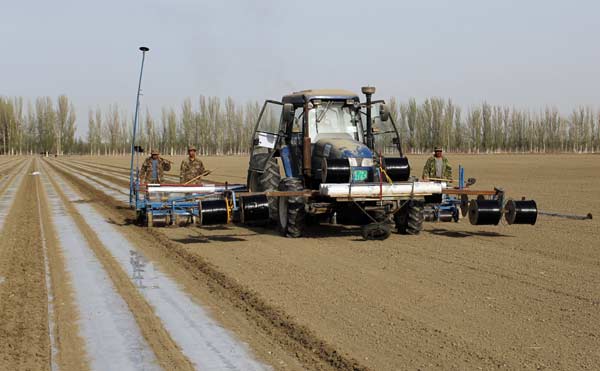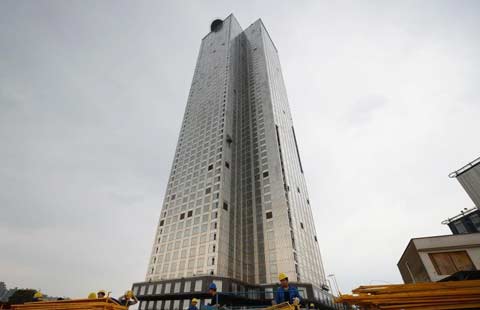Xinjiang: Productivity versus pollution
Updated: 2015-03-19 08:00
By Gao Bo(China Daily)
|
||||||||
Farmers in China's arid western regions have long regarded plastic film as a boon for business, but the environmental problems resulting from its use are prompting scientists to look for alternatives, as Gao Bo reports from Urumqi.
In the early years, cotton planters collected the unwanted plastic by hand after the harvest and then burned it along with the unwanted crop stalks, but the practice was inefficient and expensive in terms of labor, so it died out as farmers looked to lower costs.
That move was partly responsible for the region's low PE film recycling rate. Last year, 185,000 metric tons of sheeting were used in Xinjiang, but the recycling rate only averaged 40 to 50 percent, according to data from the regional agricultural department.
In a bid to encourage recycling, the region introduced new regulations on PE film for agricultural use from Dec 1, upgrading the standard thickness of 0.008 millimeters to a more-robust 0.01 mm.
"The thicker the film, the easier it is to recycle because it breaks less easily," Wang Xuenong said.
Government subsidies
During the past decade, the institute has been developing machines to collect film discarded in cotton fields, and one of its designs-part thresher, part plastic-retrieval system-has been actively promoted.
"The government gives farmers a subsidy of 15,000 yuan ($2,400) when they buy one, almost one-sixth of the price," Wang Xuenong said. "So far this year, we have already received orders for 40 machines. As long as the film meets the new standards, the machine can collect nearly 90 percent of the used film if the ground has been cleared, and about 83 percent if the film was buried in the soil before the stalks were cut," he said.
- Xinjiang to be at the heart of reforms of major State-owned energy firms
- Xinjiang confronts its problems head-on
- Xinjiang district implements online employee inspection for enterprises
- West China's oil city Karamay in Xinjiang presents 2015 work report
- Xinjiang eyes 'core area' of Silk Road economic belt
Most Viewed
Editor's Picks

|

|

|

|

|

|
Today's Top News
Skyscraper built in 19 days
Xi recognizes Kissinger as 'trailblazer'
Huayi Brothers clinches films deal
Rising steel imports spur calls for action in Washington
China paying more attention to corporate governance
President Xi sees Harvard head
US easily top exporter of arms; China No. 3, but imports dive
Huayi Brothers Media Corp clinches US films deal
US Weekly

|

|
















